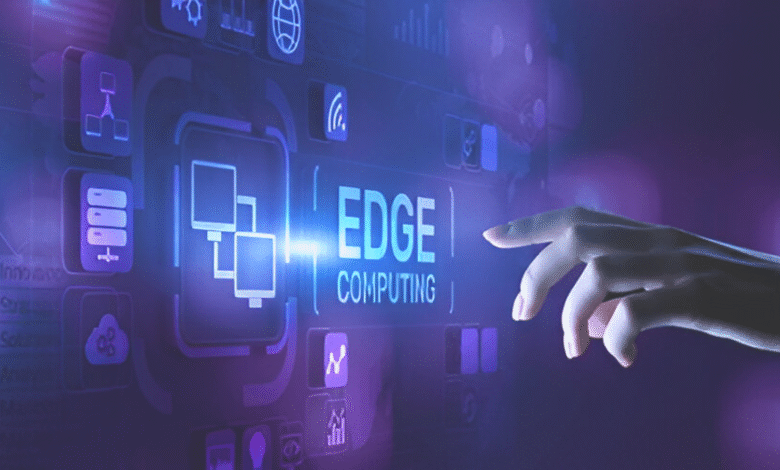Why Edge Computing Will Outpace the Cloud
Edge computing will outpace the cloud with faster processing and enhanced security for real-time applications. Discover why future is decentralized

Edge computing is rapidly emerging as the next frontier in data processing, challenging the dominance of traditional cloud computing. Unlike cloud systems that rely on centralized data centers, edge computing brings computation and storage closer to the source of data generation whether it’s IoT devices, sensors, or user endpoints. This shift is driven by the growing need for real-time analytics, lower latency, and improved efficiency across industries. As businesses increasingly adopt AI, 5G, and smart technologies, computing is proving to be a faster, more scalable, and secure alternative to conventional cloud models.
The limitations of cloud computing such as latency, bandwidth constraints, and security vulnerabilities are becoming more apparent as data demands surge. Computing addresses these challenges by enabling instant decision-making at the device level, reducing reliance on distant servers. From autonomous vehicles requiring split-second responses to smart factories optimizing production lines in real time, edge computing is transforming how data is processed. As enterprises prioritize speed, reliability, and cost efficiency, edge computing is poised to outpace the cloud, reshaping the future of digital infrastructure.
Why Edge Computing Will Outpace the Cloud
The Limitations of Cloud Computing
While cloud computing has been revolutionary, its reliance on centralized data centers presents challenges. Latency remains a critical issue, especially for applications that require real-time responses. For instance, in healthcare, delays in data transmission can impact patient monitoring systems, while in manufacturing, lag times can disrupt automated processes. Additionally, bandwidth constraints and high costs associated with transferring massive amounts of data to the cloud make it less efficient for certain use cases. Security concerns also arise as sensitive data travels across networks, increasing vulnerability to breaches.
How Edge Computing Addresses These Challenges
Computing mitigates these issues by processing data closer to where it is generated. By leveraging local devices such as routers, gateways, and IoT sensors, edge computing minimizes latency, ensuring faster response times. This is particularly crucial for applications like augmented reality (AR), where even a slight delay can disrupt user experience. Moreover, edge computing reduces the strain on bandwidth by filtering and processing data locally before sending only relevant insights to the cloud. This not only optimizes network performance but also cuts operational costs.
Security System
Security is another area where edge computing excels. Since data is processed locally, sensitive information does not need to traverse long distances, reducing exposure to cyber threats. Industries like finance and healthcare benefit greatly from this added layer of protection. Furthermore, edge computing enhances reliability by functioning independently of cloud connectivity, ensuring continuous operation even in remote or unstable network environments.
The Role of 5G Accelerating Edge Computing
The rollout of 5G networks is a game-changer for edge computing. With ultra-low latency and high-speed connectivity, 5G enables seamless communication between edge devices, enhancing real-time data processing. This synergy is particularly transformative for smart cities, where sensors and cameras generate vast amounts of data that must be analyzed instantly to optimize traffic flow, energy usage, and public safety.
IoT in Accelerating Edge Computing
Similarly, the Internet of Things (IoT) is driving the adoption of edge computing. As billions of connected devices come online, centralized cloud systems struggle to handle the sheer volume of data. Edge computing provides a scalable solution by distributing processing power across multiple nodes, ensuring efficiency and reducing bottlenecks. Industries like agriculture, logistics, and retail are already leveraging edge-enabled IoT devices to improve automation and decision-making.
Industries Leading the Edge Computing Revolution
Healthcare
Remote patient monitoring and AI-driven diagnostics rely on real-time data processing, making edge computing indispensable.
Manufacturing
Predictive maintenance and quality control systems use edge devices to detect anomalies instantly, minimizing downtime.
Autonomous Vehicles
Self-driving cars require split-second decision-making, which is only possible with edge computing.
Retail
Smart shelves and personalized customer experiences are powered by edge analytics, improving efficiency and engagement.
The Future of Edge Computing vs. Cloud Computing
Fundamental Shift in Data Processing
The digital landscape is undergoing a radical transformation as edge computing challenges the long-standing dominance of cloud computing. While cloud systems rely on centralized data centers, edge computing decentralizes processing by bringing computation closer to data sources IoT devices, sensors, and endpoints. This shift is driven by the need for real-time analytics, reduced latency, and improved efficiency.
Limitations of Cloud Computing in a Real-Time World
Despite its scalability and flexibility, cloud computing faces critical challenges in latency, bandwidth costs, and security vulnerabilities. Applications requiring instant responses such as autonomous vehicles, industrial robotics, and AR/VR struggle with cloud-dependent architectures. Additionally, transmitting massive data volumes to centralized servers increases operational expenses and exposes sensitive information to cyber threats.
How Edge Computing Solves Modern Data Challenges
Edge computing addresses cloud shortcomings by processing data locally, minimizing latency, and reducing bandwidth strain. Key advantages include Near-zero latency for mission-critical applications (e.g., remote surgery, smart grids). Bandwidth optimization by filtering data before cloud transmission. Enhanced security since sensitive data doesn’t traverse long network paths. Offline functionality, ensuring operations continue without cloud connectivity.
Role of 5G and IoT in Accelerating Edge Adoption
The rollout of 5G networks is a game-changer, providing the high-speed, low-latency backbone needed for computing to thrive. Meanwhile, the explosion of IoT devices (projected to exceed 75 billion by 2025) demands distributed processing to avoid cloud bottlenecks. Together, 5G and IoT are pushing enterprises toward edge solutions for real-time analytics, predictive maintenance, and AI-driven automation.
Industries Leading the Edge Computing Revolution
Several sectors are at the forefront of edge adoption Healthcare is Real-time patient monitoring and AI diagnostics. Manufacturing Predictive maintenance and quality control. Autonomous Vehicles is Instant decision-making for collision avoidance. Retail Smart shelves and personalized customer experiences. Energy Smart grids and real-time fault detection. These applications prove that computing isn’t just an alternative it’s becoming a necessity.
Read More: Top Wearables That Are Redefining Health Tracking
Conclusion
Computing represents a fundamental shift in data processing that is rapidly making traditional cloud architectures appear sluggish and inefficient. By decentralizing computation and bringing it closer to data sources, edge solutions eliminate the latency and bandwidth bottlenecks inherent in cloud systems. Industries requiring real-time decision-making from autonomous vehicles to smart factories are already witnessing computing’s superior performance, proving that proximity to data generation is the future of efficient processing. While cloud computing will continue to play a role in large-scale storage and analytics, the undeniable speed, security, and scalability of edge infrastructure position it as the dominant force in tomorrow’s digital landscape.
The transition from cloud to computing is not just an evolution it’s a revolution in how we handle data. As 5G networks expand and IoT devices proliferate, the demand for instantaneous processing will only grow, further accelerating edge adoption. Businesses that embrace this shift early will gain a critical competitive advantage, leveraging faster insights, lower operational costs, and enhanced reliability. The cloud may have laid the foundation for modern computing, but computing is building the future one where speed, efficiency, and real-time intelligence reign supreme. The race is already underway, and the edge is pulling far ahead.
FAQs
What is edge computing?
The processes data locally near the source, reducing latency and bandwidth usage compared to cloud computing.
How does edge computing improve security?
By minimizing data transmission, edge computing reduces exposure to cyber threats, keeping sensitive information more secure.
Which industries benefit most from edge computing?
Healthcare, manufacturing, autonomous vehicles, retail, and energy sectors see significant advantages from edge computing.
Will edge computing replace cloud computing?
No, both will coexist, with edge handling real-time tasks and the cloud managing storage and large-scale analytics.
How does 5G enhance edge computing?
5G’s low latency and high speed enable faster communication between edge devices, improving real-time data processing.











